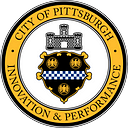Standardization — Calming the system
At the Innovation & Perfomance Help Desk, we initially worked to stabilize our system by understanding our customer’s needs and our team’s needs in order to deliver better service and learn how to better connect our customers and suppliers. Next, we turned to standardization.
Standardization in the House of Toyota helps to calm the system. There are a number of tools that can be used to reduce variability and when combined, their positive impact on the team can be significant. Tools such as standard work, job instruction, visual management, and 5S organization can serve to quickly bring a team out of chaos into a level of stability. The key is ensuring that the team is engaged in the changes and verifying the positive effects as you move forward.
Standard work is a common agreement that the team performs work in the same way every time, and that each person doing the work is completing tasks the same way. Why is this important? If we want to experiment with a change to a process we need to have enough of a standard to learn whether the change was an improvement or not. For example, let’s say we think making a grilled cheese sandwich with mayonnaise on the outside rather than butter will taste better for our customers and we want to test this idea. If all of our sandwich makers are making grilled cheeses in their own way, with whichever ingredients they want to use, how will testing the change to mayonnaise work?
Will the team feel like robots if we tell them how to do their work for every little thing? Well yes, if you tell them how to do their work it would probably feel like they are back in elementary school. Instead, we allow the workers themselves to develop their standard work, discuss how the work should be done, and coach them to agree on sticking to those standards. When they discover a problem or come up with an idea for improvement, a solution or idea can be tested and the group can decide to change the standard work.
Job instruction must be provided when someone is willing to do their job using the standard work, but they don’t know how. Job instruction is used to support capability and skills expansion for any member of the team and is generally provided by the team leader. Standard work and job instruction work together to strengthen the team’s skills, capability, and capacity to meet their customers’ needs.
Visual management provides a way for everyone on a team to easily see what is happening with the work, as close to real-time as possible. If everyone on the team is able to easily see useful data related to their work, such as deadlines, customer satisfaction, and existing issues, it enables them to quickly adjust and take action in order to improve the quality of work in a coordinated fashion. Enabling the team to identify and solve problems quickly is the top benefit of visual management.
5S Organization is an acronym that stands for: sort, set in order, shine, standardize and sustain. 5S is defined as a system for organizing spaces so work can be performed efficiently, effectively, and safely. This system focuses on putting everything where it belongs and keeping the workplace clean, which makes it easier for people to do their jobs without wasting time or risking injury. In essence, it means having everything in it’s proper place, every time, so that anyone who needs to use the materials or space can do so without wasted effort. When the workplace is clean and organized, achieving consistently good results is easier to do.
Here in I&P we have used all four of these tools to help bring stability to our Help Desk. In the next post, Srini will explain how we used these tools in combination and the impact on the Help Desk team and their ability to consistently meet our customers’ needs.
Keep up with series on Pittsburgh I&P under Process Improvement and feel free to comment here with questions or concerns!

